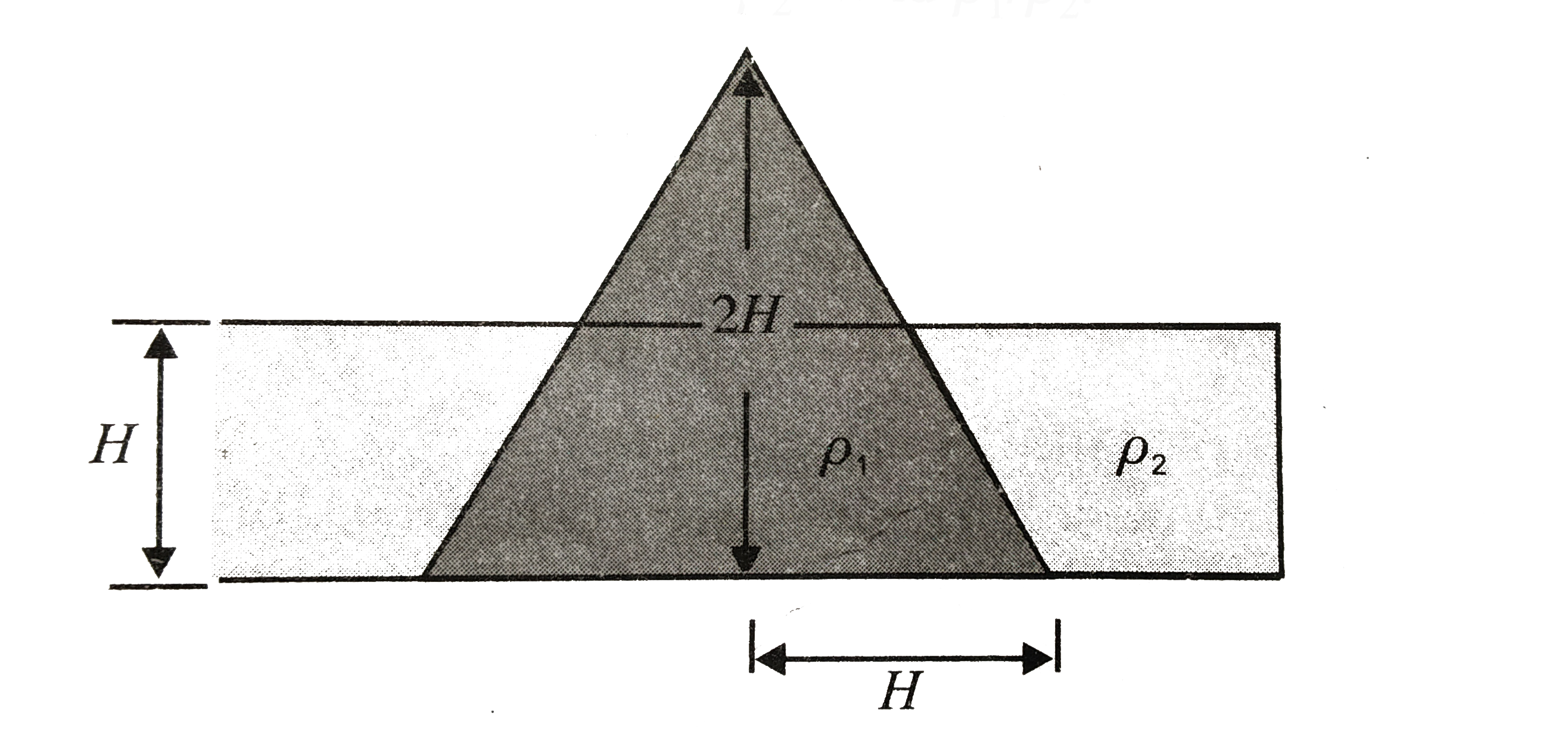Two wire have cross section diameters d1 and d2, length L1 & L2 & densities ρ1 & ρ2 such that
d1:d2::1:2,L1:L2::2:1 and ρ1:ρ2::1:2. What weight must be suspended to the 2nd wire if the transverse wave produced in it has the same speed as that produced in 1st wire, which bears a load of 10kgwt.
To solve the problem, we need to find the weight that must be suspended to the second wire so that the speed of the transverse wave produced in it is the same as that produced in the first wire. We will use the relationship between the tension in the wires, their densities, and their cross-sectional areas.
1. Identify the Given Ratios:
- Diameter ratio: d1:d2=1:2
- Length ratio: L1:L2=2:1
- Density ratio: ρ1:ρ2=1:2
2. Express the Variables:
- Let d1=d and d2=2d.
- Let L1=2L and L2=L.
- Let ρ1=ρ and ρ2=2ρ.
3. Calculate the Cross-Sectional Areas:
- The area A of a wire is given by A=πd24.
- Thus, A1=πd24 and A2=π(2d)24=π(4d2)4=πd2.
4. Write the Tension in the Wires:
- The tension in the first wire T1=m1g=10g (where m1=10 kg).
- Let the tension in the second wire be T2=mg, where m is the unknown mass we need to find.
5. Use the Wave Speed Formula:
- The speed of a transverse wave in a wire is given by:
v=√Tμ
- Where μ (mass per unit length) is given by μ=mL.
6. Set Up the Equation for Equal Speeds:
- For the first wire:
v1=√T1μ1=
⎷10g10ρA1L1
- For the second wire:
v2=√T2μ2=
⎷mgm(2ρ)(πd2)L
7. Equate the Speeds:
- Since v1=v2:
10g10ρ⋅πd242L=mgm(2ρ)(πd2)L
8. Simplify the Equation:
- Cancel out common terms and simplify:
10g⋅2L10ρ⋅πd24=mg⋅Lm(2ρ)(πd2)
- This simplifies to:
8=m2
9. Solve for m:
- Multiply both sides by 2:
m=80 kg
Conclusion:
The weight that must be suspended to the second wire is 80 kg.
- Diameter ratio: d1:d2=1:2
- Length ratio: L1:L2=2:1
- Density ratio: ρ1:ρ2=1:2
- Let d1=d and d2=2d.
- Let L1=2L and L2=L.
- Let ρ1=ρ and ρ2=2ρ.
- The area A of a wire is given by A=πd24.
- Thus, A1=πd24 and A2=π(2d)24=π(4d2)4=πd2.
- The tension in the first wire T1=m1g=10g (where m1=10 kg).
- Let the tension in the second wire be T2=mg, where m is the unknown mass we need to find.
- The speed of a transverse wave in a wire is given by:
v=√Tμ
- Where μ (mass per unit length) is given by μ=mL.
- For the first wire:
v1=√T1μ1=
⎷10g10ρA1L1
- For the second wire:
v2=√T2μ2=
⎷mgm(2ρ)(πd2)L
- Since v1=v2:
10g10ρ⋅πd242L=mgm(2ρ)(πd2)L
- Cancel out common terms and simplify:
10g⋅2L10ρ⋅πd24=mg⋅Lm(2ρ)(πd2)
- This simplifies to:
8=m2
- Multiply both sides by 2:
m=80 kg
The weight that must be suspended to the second wire is 80 kg.
Topper's Solved these Questions
- BOOK - NARAYNACHAPTER - WAVESEXERCISE - Evaluate yourself-112videos
WAVES
- BOOK - NARAYNACHAPTER - WAVESEXERCISE - Evaluate yourself-29videos
WAVES
- BOOK - NARAYNACHAPTER - VECTORSEXERCISE - LEVEL-II (H.W)14videos
VECTORS
- BOOK - NARAYNACHAPTER - WORK , ENERGY & POWER EXERCISE - EXERCISE IV43videos
WORK , ENERGY & POWER
Similar Questions
Knowledge Check
- Question 1 - Select One
Two wires of equal diameters, of resistivities ρ1 and ρ2 and length l1 and l2, respectively of the combination is
Aρ1l1+ρ2l2l1+l2Bρ1l2+ρ2l1l1−l2Cρ1l2+ρ2l1l1+l2Dρ1l1+ρ2l2l1−l2 - Question 2 - Select One
Two disc has same mass rotates about the same axis with their densities ρ1 and ρ2 respectively such that (ρ1>ρ2), then the relation between I1 and I2 will be
AI1<I2BI1=I2CI1>I2DI1=2I2 - Question 3 - Select One
Two circular discs A and B have equal masses and uniform thickness but have densities ρ1 and ρ2 such that ρ1>ρ2 . Their moments of inertia is
AI1>I2BI1>>I2CI1<I2DI1=I2
Two discs having same mass rotate about the same axes. If p1andp2 be the densities of two bodies (ρ1>ρ2), then what is the relation between I1andI2?
View SolutionThree liquids of densities ρ1,ρ2 and ρ3 (with ρ1>ρ2>ρ3), having the same value of surface tension T, rise to the same height in three identical capillaries. The angles of contact θ1,θ2 and θ3 obey
View SolutionTwo wires of same radius having lengths l1andl2 and resistivities ρ1andρ2 are connected in series. The equivalent resistivity will be
View SolutionA hollow metallic sphere, the outer and inner diameters of which are d1andd2. floats on the surface of a liquid. The density of metal is ρ1 and the density of liquid is ρ2. What weight must be added inside the sphere in order for it to float below the level of liquid?
View SolutionThe speed of transverse waves in a wire of length L , density ρ, cross - sectional area A and stretched with a tension T is given by
View Solution


